Pumpkin introduction
Pumpkin guess box
For older preschoolers (age 4 and up), you could start off your study of pumpkins with a guess box! You can either put a real pumpkin, mini pumpkin, fake pumpkin, or a picture of a pumpkin in your guess box. Then you're ready to start the critical thinking fun! You can find the directions on how to do a guess box here. These are a few ideas for clues to start off your pumpkin guess box.
- It comes from a plant
- It is used at Halloween
- It is orange
You want to start off with just one clue, and the clue you use will depend on your child's development. You will probably want to start with a more vague clue, and then work towards more concrete if your child needs.
Pumpkin wordsplash
A wordsplash could be done with any child that is old enough to talk. Simply print out the pumpkin wordsplash page. Then, ask your kiddos what they knows about pumpkins. Simply record what they say. It's called a wordSPLASH because you can just kind of splash the words around on the page. This one has all Grace's ideas:
Doing a wordsplash in the beginning of a unit will help you determine your child's prior knowledge on the topic. If you save it, you can come back to it later and add things that you have learned.
Read pumpkin books
 |
| 12 Perfect Pumpkin Books from KC Edventures |
I like to start off by reading a simple nonfiction text to learn a little of information about pumpkins. Plus, I always learn something too!
Printable Books
These two FREE printable books are great for any age. You can print them in color or black and white. I like to make them in black and white, and then the kids can color the illustrations themselves.
 |
| Pumpkins from DLTK |
This Pumpkins book gives basic information about the life cycle of a pumpkin.
 |
| Five Little Pumpkins from DLTK |
Pumpkin videos
 |
| How to Grow Pumpkins posted by Very Best Baking |
 |
| Pumpkin Feels Lonely posted by The Foodies Books |
 |
| That's How a Pumpkin Grows posted by Brian Vogan |
 |
| Five Little Pumpkins Sitting On a Gate posted by The Happy Ape |
Pumpkin sensory play
There are so many great ideas for pumpkin sensory play! Sensory play is a great way to assist your child's development, and it's fun! According to Danielle Steinberg, author of Developing and Cultivating Skills Through Sensory Play, children (and adults) learn best when they engage their senses. It helps in your child's cognitive, linguistic (language), social, emotional, and physical development. I won't go into all the details here, but take a look at the article and see for yourself!
I found some great directions for pumpkin cloud dough from Growing a Jeweled Rose.
Ingredients:
- 8 cups flour
- 1 cup vegetable oil
- pumpkin pie spice
- orange tempera paint or crushed chalk
The main ingredients for cloud dough are just flour and oil, in an 8:1 ratio. That could mean 8 cups of flour and 1 cup of vegetable oil, or 4 cups of flour, 1/2 cup oil. You get the gist. Knead it together with your hands. Add some pumpkin pie spice for a scent, and you can use orange tempera paint or crushed chalk to color your cloud dough. I didn't happen to have tempera paint or orange chalk, so I tried some food coloring. That did not work, so save yourself the effort. The kids didn't mind that it just smells like pumpkin :). I added in some measuring cups, play utensils and bowls, and some mini pumpkins, of course!
Below I compiled a list of some awesome pumpkin-themed sensory play ideas. Hopefully you'll find an activity you and your little one can enjoy!
 |
| Pumpkin Moon Sand from Growing a Jeweled Rose |
 |
| Pumpkin Oobleck from Inspiration Laboratories |
 |
| Pumpkin Pie Play Dough from Childhood Beckons |
Or for an edible play dough:
 |
| Pumpkin Play Dough from Wildflower Ramblings |
 |
| Pumpkin Spice Sensory Rice from Frogs and Snails and Puppy Dog Tails |
 |
| Silly Pumpkin Putty Slime from Growing a Jeweled Rose |
 |
| Pumpkin Goop from Growing a Jeweled Rose |
 |
| Pumpkin Spice Clean Mud from Frogs and Snails and Puppy Dog Tails |
Pumpkin science
There are many very basic activities that we can do with our young children to promote curiosity about the world and fulfill their desire to learn.
Before you start a hands-on experience with pumpkins, you probably want to go out and get a pumpkin. Maybe even a few different varieties and sizes, if possible. When we went to a local pumpkin patch, Grace was awed at the different kinds of pumpkins. I wish we could have gotten one of each! If you live in Maryland, here is my post about pumpkin patches in your area.
Learn about the life cycle of a pumpkin.
As a teacher, I've taught about many different life cycles: butterflies, pumpkins, frogs, trees, humans. Once kids learn about one, they can apply that knowledge to help them understand other life cycles, and they really do love learning about them. First, learn about the pumpkin life cycle in a book, like Gail Gibbons' The Pumpkin Book, the DLTK Pumpkins mini-book, or watch a video about it. Then, you could print out the life cycle sheet and have your child color it. Cut out each section, string in order on a piece of yarn, and tape them closed. You could even make it a necklace. I like to emphasize with my little ones how amazing God's creation of our world is, and life cycles are a perfect example of this. |
| Pumpkin Life Cycle Sequencing A to Z Teacher Stuff |
Learn pumpkin parts
Exploring and talking about the parts of a pumpkin can be done with children of any age. Start with a real pumpkin if you can, and look at it carefully. Talk about the stem and it's purpose. If you were able to venture out to a field with pumpkins, make connections to what you saw: vines, dead flowers, rotting pumpkins, etc. Children 3 and up might be interested in doing this little Parts of a Pumpkin labeling sheet. You could also label the parts of a real pumpkin.
 |
| Parts of a Pumpkin Ship Shape First Grade |
Explore pumpkin characteristics
With little ones, this could range from seeing if they sink or float to throwing them against concrete to see what happens. Both sound fun! Toddlers love water play, so putting some pumpkins in water, especially if you have varying sizes and types, to see what happens will be fun and a start to the scientific process. When you're "done" with your pumpkins, after Halloween or Thanksgiving, let your little ones destroy them, all in the name of learning!
 |
| Pumpkins sink or float? Preschool Powol Packs |
Explore pumpkin innards
Cut open a pumpkin or two and let the kiddos check it out. Some will just want to look, while others will love sticking their hands in and feeling around. It might get a little messy, so a smock or old t-shirt is probably a good idea. Practice counting the seeds you find. You modeling how to count will help your little one, especially for numbers that are hard for him. Save the seeds, and bake them, string them in a necklace or garland, or plant them. Build vocabulary by using describing words like squishy, stringy, soft, and spongy. Talk about the parts that they notice inside the pumpkin. Discuss what those parts might do. You could also see if the pumpkin floats or sinks when cut in half, or salvage the pumpkin for an experiment on rotting (see below).
| Explore pumpkin insides Cute & Peculiar |
Study decaying pumpkin
Preschoolers may find it fascinating to watch the end of a pumpkin's life as it rots. I have had many discussions with Grace about what happens when various foods rot or "go bad". I know I tend to keep my pumpkins into the rotting stage by accident, so this year, I'm going to do it on purpose! Observe the pumpkin after it's made it's jack-o-lantern debut on Halloween. Talk with your child about what he notices each day or whenever you check on it. Make connections to the life cycle of a pumpkin and the purpose behind a pumpkin returning to the earth. Below is a link to an experiment from PBS with a short video from Sid the Science Kid.
 |
| Decaying Pumpkin Experiment & Video PBS Parents |
Plant a pumpkin
If you saved those seeds from your pumpkin, try planting them to grow a new pumpkin. This completes the life cycle and will be a great opportunity for your child to see it firsthand. Now, planting a pumpkin outside in the fall will probably not work out so well, unless you live in a warm climate. But, you could start it indoors or try a greenhouse. Or you could do as we did at school when we had to release newly developed butterflies in November, and let nature takes its course with your pumpkin plant. It's a good lesson!
 |
| Growing Pumpkins in Pumpkins Life With Moore Babies |
Pumpkin decorating
In previous years, Grace has decorated pumpkins with permanent markers, which is relatively clean and easy, but I wanted to try something new this year. So here are a few cool ideas I found:
Stickers
 |
| Dot Sticker Pumpkins Putti's World |
I can't believe I hadn't thought of this myself! It is so simple, and what parent doesn't have stickers laying around? Using stickers would be a good fine motor activity for toddlers and preschoolers, and is about as clean as it gets. Foam stickers would work great too!
Glitter and gems
 |
| Sparkly Pumpkins The Imagination Tree |
So this one is a little higher on the messy index, but it sure is adorable! This example uses glitter and sequence, but you could also just use glue and tissue paper, shapes, or Halloween pictures (or pictures of anything, really).
Leaves
 |
| Leaf Covered Pumpkins Positive Parenting Connection |
I think this one is my favorite, and I will definitely be doing this to one of the many pumpkins we've collected this year. Simply glue leaves that you've collected onto your pumpkin and coat with Mod Podge. How cute would this be as a Thanksgiving decoration or centerpiece?!
Pins and Buttons
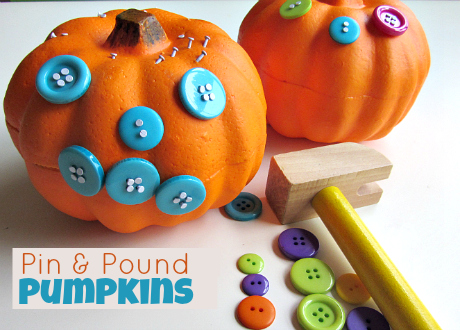 |
| Pin and Pound Pumpkins No Time for Flashcards |
Pounding pins (or nails) and buttons into a pumpkin is a clever way of creating a unique pumpkin decoration with some good old-fashioned gross motor skills practice. This would probably be best for preschoolers, as they won't be as tempted to eat the pins, nails, or buttons or smack someone with the hammer. If not for decorating, hammering in some pins and buttons sure would be fun before you throw out your pumpkin.
Paint

Painted Pumpkins
Young House Love
This is such a cute take on your typical pumpkin painting. Use painter's tape to create a face, shapes, or designs on a pumpkin. Then, let your little one paint away. When dry, simply take off the painter's tape, and your design will be revealed. So cute!
 |
| Painted Pumpkins Young House Love |
Pumpkin crafts
I am very practical when it comes to crafts. I like things that can be used for something, so I love that all of the pumpkin crafts in this post can be put to good use as decorations for Halloween and Thanksgiving.
Stained glass pumpkin
I adapted this craft from some other examples I've seen for different holidays. It is a simple craft, but it is probably best for kids ages 3 and up. If you use contact paper instead of glue and wax paper, it could work for some younger children, as well.
You will need:
- wax paper
- tape
- Elmer's glue
- scissors
- paint brush
- permanent marker
- orange tissue paper cut into squares
*I used two different colors of orange tissue paper. When I cut them, I first cut them into 1-inch long strips. I didn't want the shapes to be all perfect squares, so I cut them a little sloppy to make different sized squares and rectangles.
Here is how to make your stained glass pumpkin:
1. Tape a sheet of wax paper to the table.
2. Using the permanent marker, draw a pumpkin shape. Grace (4) was doing this project, and she had a little trouble sticking with it long enough to finish this large pumpkin. For some children, a smaller pumpkin or a few smaller pumpkins might be best.
3. Put some Elmer's glue in a dish and mix in a small amount of water. You want it a little runnier than normal, but not watery.
4. Using the paint brush, brush some glue onto your pumpkin shape. It will bead up, but that is ok.
5. Place the tissue paper shapes onto the glue. Continue covering the rest of the shape. You can go over the line of your pumpkin with your tissue paper because it will be cut off later.
6. As you go, brush glue over your tissue paper pieces to flatten them down. The glue acts as a finish and will dry clear.
7. Let the glue dry. Then cut out the pumpkin shape, and put up to a window to catch the sun.
Here is Grace's finished pumpkin. She was very proud of it, and I think it makes for a cute little decoration.
Below are some other fun pumpkin crafts that I found in my searches that would be great for toddlers and preschoolers.
 |
| Paper Plate Pumpkin Muffin Tin Mom |
 |
| Cardboard Tube Pumpkin Lifetime Moms |
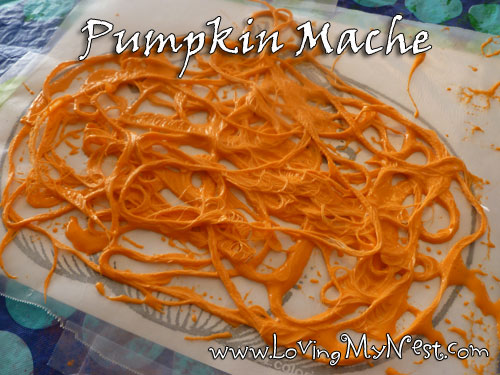 |
| Pumpkin Mache Loving My Nest |
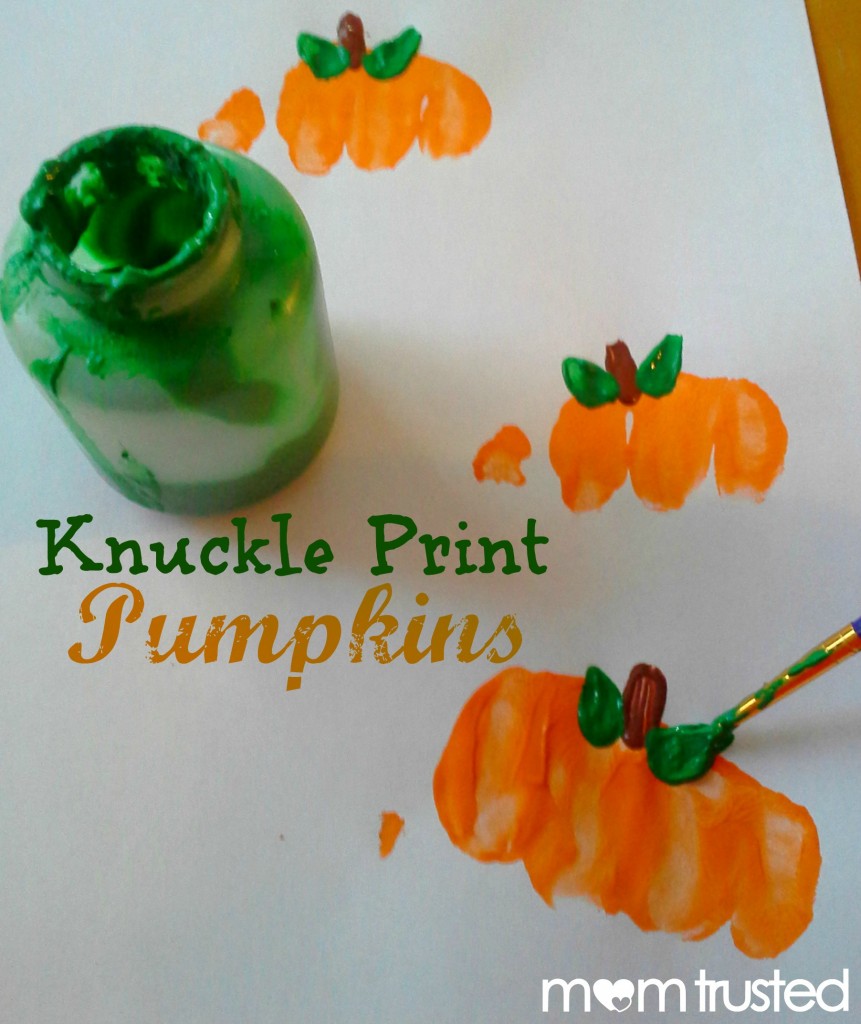 |
| Knuckle Print Pumpkins Mom Trusted |
 |
| Pumpkin Garland Right Start Blog |
Pumpkin food for kids!
If you buy some canned pumpkin, you'd be amazed at how easy it is to make some everyday recipes into pumpkin delicacies. Add some pumpkin and pumpkin pie spice to pancake batter, and you've got pumpkin pancakes. The same idea goes for pumpkin waffles. Add pumpkin and cinnamon to a basic french toast recipe, and you've got pumpkin french toast.
This site has some very easy and awesome pumpkin recipes that are great for kids. The list includes how to make pumpkin cream cheese, pumpkin, hummus, smoothies, and more.
Pumpkin fluff is something I used to make with my students every year because it was so easy and delicious.
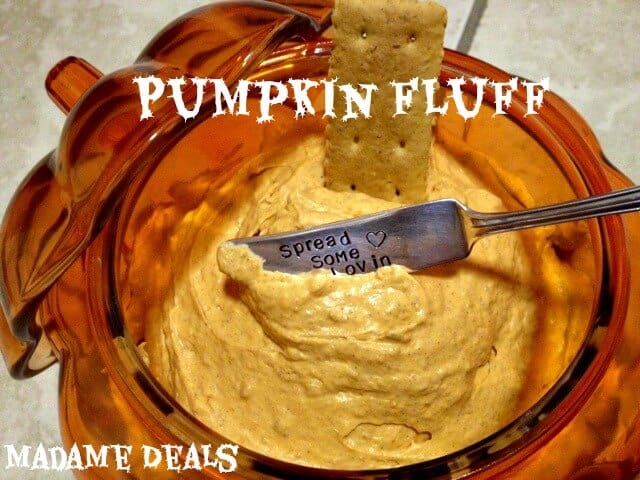 |
| Pumpkin Fluff Madame Deals |
Pumpkin poetry
A great way to help kids express their ideas about a topic is through poetry. I remember being very intimated by poetry until I became a teacher. I enjoyed it much more once I realized that poetry can be written anyway you want. It's kind of liberating!
To help my daughter Grace express her ideas about pumpkins, we wrote a poem. This type of activity can also help your child build vocabulary by using adjectives, sensory words, and content specific words (words having to do with pumpkins). With young children and those new to writing poetry, having some structure can be helpful. I came up with a little pumpkin poem template that looks like this:
 |
| Pumpkin Poem Click the link to open and print. |
For this template, simply write a word or phrase on each line.
- 2 words that tell how a pumpkin feels. This could be the inside or outside of the pumpkin.
- 3 words that tell how a pumpkin looks.
- 2 ways that pumpkins are used.
- 1 word to describe a pumpkin.
Before writing your poem, brainstorm ideas with your child. You may want to have a pumpkin with you to help your little one come up with ideas.
If you'd rather not have the directions on your poem template, use this one:
 |
| Pumpkin Poem Template Click the link above to open and print. |
Get creative if you want, and use the pumpkin template any way you'd like.
Here is an example of what a pumpkin poem might look like:
 |
I hope you and your little ones enjoyed everything pumpkins!
- Jessica







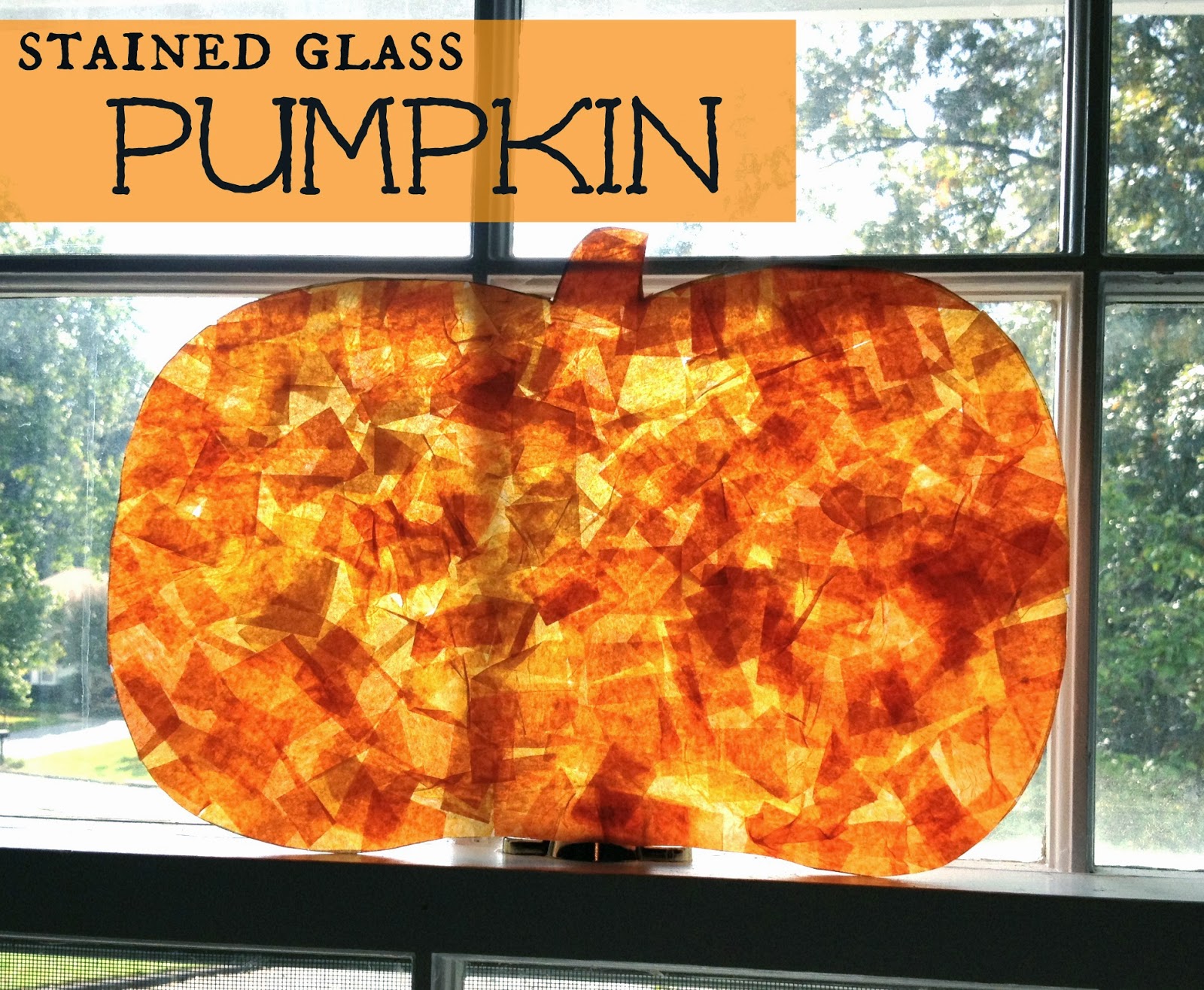








No comments:
Post a Comment